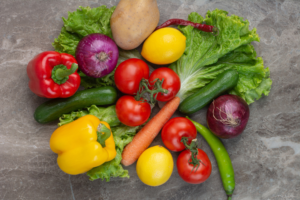Saffron is obtained from the stigmas of the Crocus sativus flower, also known as the “saffron rose”. It is considered a high-value agricultural product, as it is used as a spice that provides color, flavor, and aroma to food; and as a medicinal plant because it has been shown to help the health of the nervous, gastrointestinal, cardiovascular, and immune systems.
This plant is characterized by a lilac-colored flower, in which the red color of the stigmas and the yellow of the stamens stand out. Each flower has three saffron stigmas, also called threads, which are joined to the base by the style.
Saffron production consists of several stages: the collection of flowers, the separation of the stigma from the rest of the flower, dehydration, and preservation, which is why it is considered the most expensive spice in the world. The characteristics of each process will depend on the cultural traditions of the country in which the plant is produced, for example, Iran, Greece, Turkey, China, Australia, and Spain, among others.
The use of saffron in cooking dates back thousands of years. Although there were already references in a painting from the palace of Minos in Knossos, Greece; in Egypt, in the year 1000 BC, saffron was used in embalming or as a colorant for shrouds where female mummies were covered in yellow and males in red, reads the text Saffron: saffron crocus sativus by the Spanish Nutrition Foundation (FEN).
Properties of saffron
Saffron is rich in protein, iron, potassium, phosphorus, and the carotenoid dimethyl crocetin.
In addition, its composition includes carotenoids, monoterpene aldehydes such as safranal, which is responsible for the aroma; activating proteins and vitamins B1 and B2, says nutritionist Gabriela Morataya.

The literature explains that spices provide minimal nutritional value, due to the small amount used. For example, in cooking, approximately 0.25 grams of saffron is used.
Benefits of saffron
For years, saffron has been popular due to its characteristics and chemical composition, and has been considered a source of health. These are some of the benefits of the stigmas of the Crocus sativus flower.
- Reduces symptoms of premenstrual syndrome: taking 25 or 30 grams of saffron a day helps reduce discomforts such as irritability, headaches, and body pain, common in premenstrual syndrome.
- Helps treat cancer: Carotenoids inhibit the growth and synthesis of nucleic acids in tumor cells, so it could be important for the treatment of some types of cancer.
- Prevents Alzheimer’s and Parkinson’s: Crocetin esters and safranal are characterized by fighting neurodegenerative diseases such as Alzheimer’s, Parkinson’s, and multiple sclerosis, as well as anti-tumor, macular degradation, atherosclerosis, and lipid-lowering effects.
- It is antidepressant and anti-stress: thanks to its antioxidant and other capacities, it has a seizure-mitigating effect, and is anti-inflammatory, antidepressant, anxiolytic, anti-stress, and sedative.
- Improves memory and learning: Antioxidants protect the brain and stimulate its development, thus enhancing memory, learning, and attention.
- It benefits the digestive system: in traditional medicine, it is also used to reduce appetite and promote the expulsion of accumulated gases.
- Protects body tissues such as the heart, brain, lungs, liver, and kidneys from toxic compounds.
Side effects
It is important to consume saffron in doses recommended by professionals. In some people, it causes side effects such as anxiety, dizziness, nausea, headache, and dry mouth, among others.
Ideally, you should not exceed 1.5 grams per day, as this could cause poisoning, and you should not prolong the treatment for more than six weeks. A dose greater than 10 grams can be extremely dangerous.
It should not be consumed by pregnant women, as it can cause miscarriage. It is also not recommended for people with bipolar disorder, or those taking treatment for hypertension, anticoagulants, and antidepressants. It is recommended that you consult your doctor before using it.
How to prepare it
One of the most common ways to consume saffron is as a spice, which is used to give color, flavor, and aroma to rice. It can also be found in powder and capsule form, as well as the stigmas of the flower. Whichever form you find it in, check the recommended dosage.























+ There are no comments
Add yours